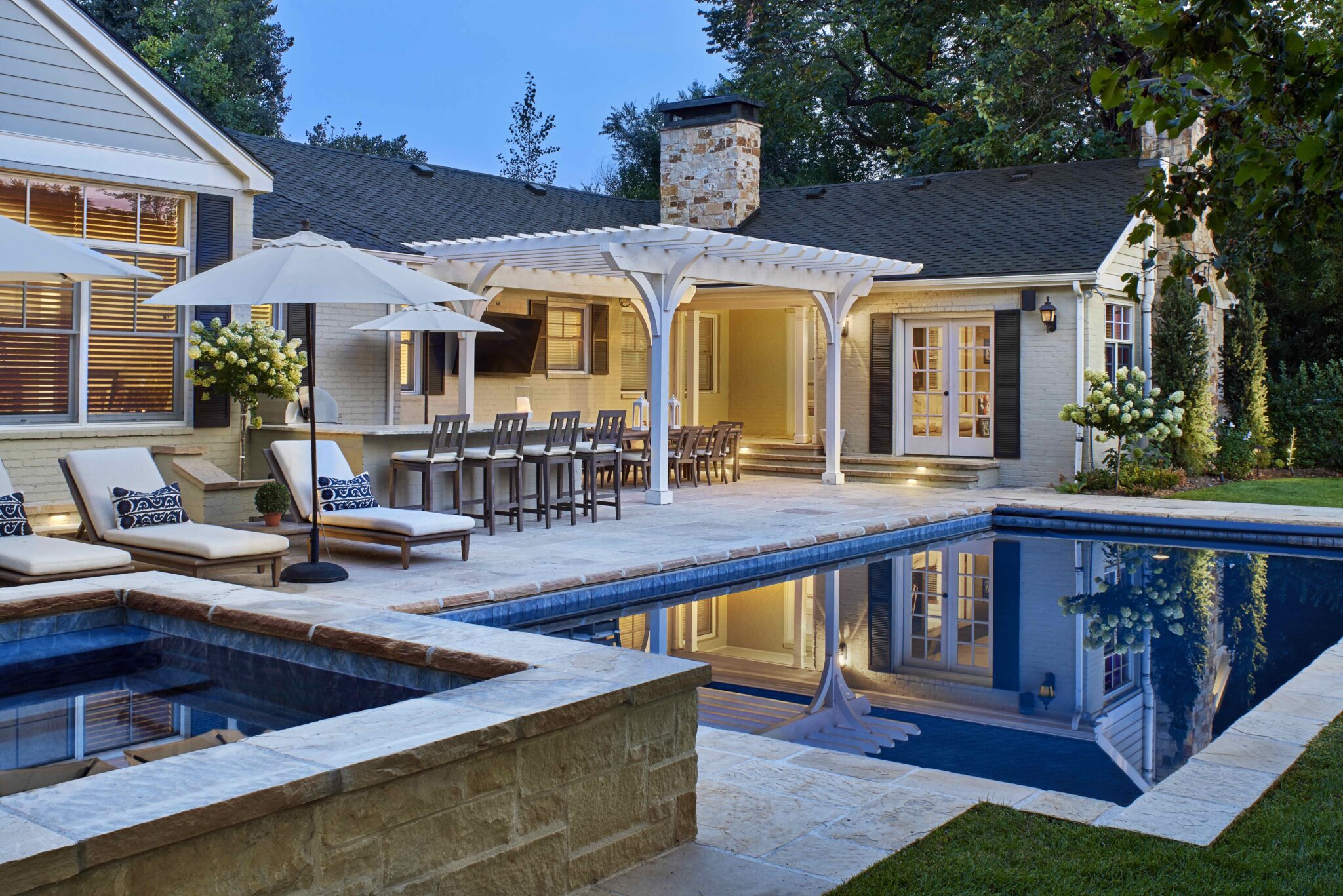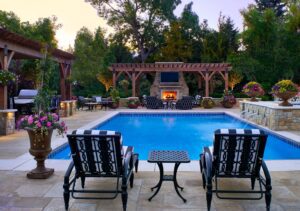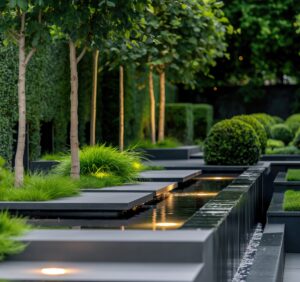A swimming pool is more than just a place to cool off on hot days—it’s a luxurious addition to any property that enhances both lifestyle and property value. But have you ever wondered how pools are built? Constructing a pool is a complex process that involves careful planning, precise execution, and attention to detail.
In this comprehensive guide, we’ll explore the step-by-step process of building a pool, the materials used, and what you need to consider before starting your project. Whether you’re planning an in-ground or above-ground pool, this article will provide valuable insights into the construction process.
Why Build a Pool?
1. Enhancing Property Value
A well-designed swimming pool can increase your property’s value by up to 7%, making it an attractive investment for homeowners. Pools also improve curb appeal and make your home stand out in the real estate market.
2. Creating a Lifestyle Upgrade
Pools provide an ideal space for relaxation, exercise, and entertainment. Whether hosting parties or enjoying quiet moments with family, a pool significantly enhances your outdoor living experience, creating a perfect backdrop for cherished memories and vibrant gatherings.
Types of Pools
Before diving into the construction process, it’s essential to understand the different types of pools available:
1. In-Ground Pools
These are permanent structures built into the ground and come in various materials:
- Concrete Pools: Highly customizable and durable but require longer construction times;
- Fiberglass Pools: Pre-manufactured shells installed in one piece; quicker to install but less customizable;
- Vinyl-Liner Pools: Cost-effective with customizable shapes but less durable than other options.
In summary, choosing the right pool type depends on your budget, desired customization, and how quickly you want it installed.
2. Above-Ground Pools
These pools are a cost-effective and quick installation option, making them suitable for families on a budget or those seeking temporary solutions. However, they typically lack the durability and aesthetic appeal of in-ground pools, limiting their long-term value and design flexibility.
Step-by-Step Pool Construction Process
1. Planning and Design
The first step in building a pool is planning and design. This phase involves:
- Choosing the Location: Ensure the site has proper drainage, sunlight exposure, and accessibility for construction equipment;
- Designing the Pool: Work with architects or designers to create a layout that fits your space and meets your needs;
- Obtaining Permits: Secure necessary permits from local authorities to comply with building codes and regulations.
Proper planning ensures that your project runs smoothly without unexpected delays or costs.
2. Excavation
Once the design is finalized, excavation begins:
- heavy machinery removes soil from the designated area based on the pool’s shape and size;
- The site is leveled and prepared for structural work.
Excavation typically takes 1–3 days depending on soil conditions and pool size.
3. Installing Pool Structure
The next step involves constructing the pool’s structure based on its material type. For concrete pools, steel rebar is installed to reinforce the structure. Then, shotcrete or gunite, which is a mixture of cement and sand, is sprayed onto the rebar framework. After that, the concrete is smoothed and left to cure for several weeks, ensuring its strength.
On the other hand, for fiberglass pools, the pre-manufactured shell is delivered to the site. It is carefully lowered into place using a crane. Once positioned, the shell is leveled, and backfilling begins around its edges to ensure a stable and secure installation.
Finally, for vinyl-liner pools, a frame made of steel or polymer panels is assembled. Subsequently, a vinyl liner is installed over the frame to create a waterproof barrier. This method ensures that the pool remains leak-proof while providing an attractive finish.
4. Plumbing and Electrical Systems
Proper plumbing ensures water circulation, filtration, and heating:
- Pipes are installed for water inflow, outflow, and drainage systems.
- Electrical wiring connects pumps, heaters, lights, and other features.
This step requires professional expertise from professional landscapers to ensure safety and compliance with local codes.
5. Finishing Touches
Once the pool structure is complete, finishing touches bring it to life. Concrete pools are finished with tiles or plaster for durability and aesthetics, while fiberglass pools may include decorative elements. Installing patios and decks made of concrete, wood, or stone enhances safety and style, and landscaping adds greenery and water features for a stunning overall look.
Costs Involved in Pool Construction
The cost of building a pool varies depending on factors such as size, material type, location, and additional features. Consequently, understanding these variables is essential for estimating average costs accurately:
- Concrete Pools: $50,000–$100,000+ (highly customizable but expensive).
- Fiberglass Pools: $30,000–$60,000 (quicker installation but limited customization).
- Vinyl-Liner Pools: $20,000–$40,000 (affordable but less durable).
Additional costs include permits ($500–$2,000), landscaping ($3,000–$10,000), and maintenance equipment ($1,000–$3,000).
Maintenance After Construction
After your pool is constructed, regular maintenance is essential for its longevity and enhances the front of house appeal. This includes weekly tasks like skimming debris and testing water chemistry, along with monthly tasks such as cleaning filters and inspecting plumbing for leaks. Investing in automated cleaning systems can save time while keeping your pool pristine throughout the year.
Frequently Asked Questions (FAQ)
1. How long does it take to build a pool?
Building an in-ground pool typically takes 6–12 weeks depending on its complexity and material type.
2. Do I need permits for building a pool?
Yes! Most municipalities require permits to ensure compliance with safety standards.
3. What’s the best material for my pool?
Concrete offers durability; fiberglass provides quick installation; vinyl liners are budget-friendly but less durable.
4. Can I add features like waterfalls later?
Yes! Many features like waterfalls or lighting can be added post-construction if planned during initial design stages.
5. How much does it cost to maintain a pool annually?
Annual maintenance costs range from $500–$2,500 depending on size & equipment used.
6. Are saltwater pools better than chlorine pools?
Saltwater systems offer gentler water & lower chemical use but have higher upfront costs compared to traditional chlorine systems.
7. Can I build a DIY pool?
While possible for above-ground pools—professional help ensures quality & safety for complex in-ground projects!
Building a swimming pool involves meticulous planning & execution—but results in an invaluable asset enhancing both lifestyle & property value! By understanding each step—from excavation through finishing—you’ll embark confidently toward creating stunning outdoor spaces tailored perfectly toward relaxation entertainment alike!




